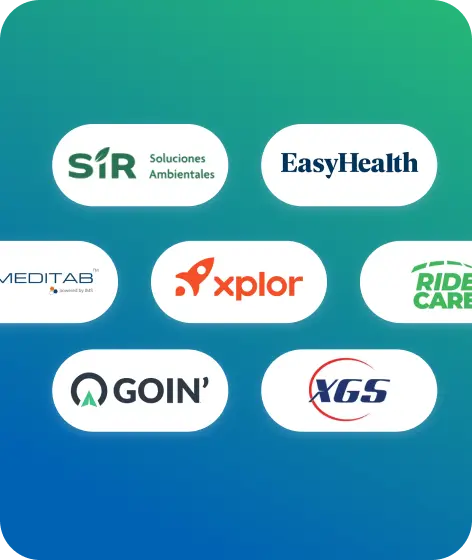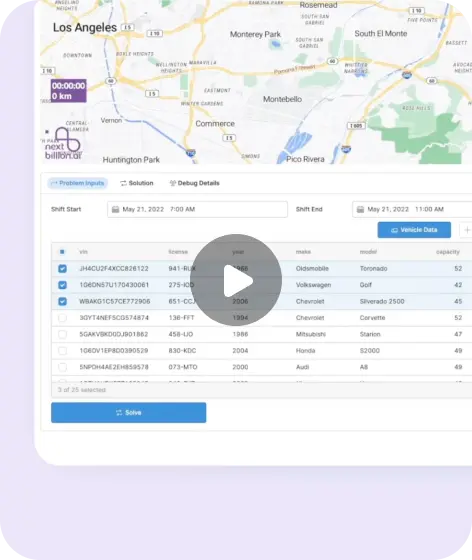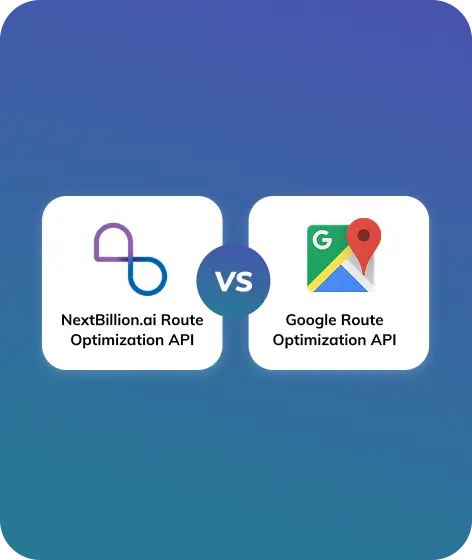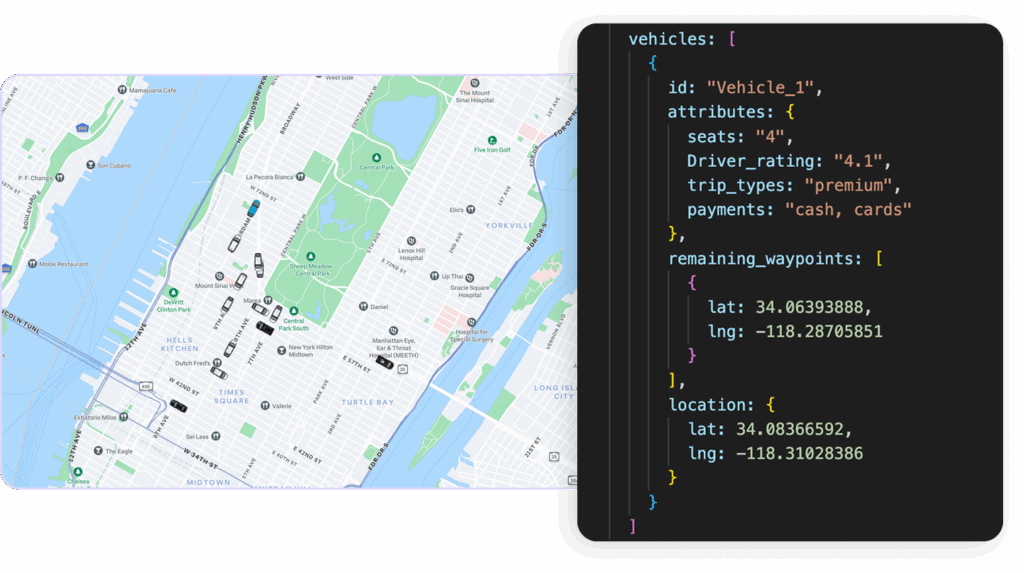Table of Contents
Introducing the Driver Assignment API: Enabling Intelligent and Scalable Task Allocation
Fleet productivity and operational efficiency are at the core of any successful logistics operations. However, optimizing performance goes beyond just what happens on the road. The real impact often begins much earlier—during the dispatch process. It’s the strategic permutations and combinations made at this stage that shape the story of your success.
A strategic dispatcher or decision-maker can confidently take ownership of the task, using their expertise to navigate challenges effectively. But what happens when the scale and time sensitivity of operations grow beyond manual control? As volumes increase and delivery windows tighten, relying solely on human intervention can lead to inefficiencies, delays, and costly errors.
This is where the new API powered by NextBillion.ai makes a measurable impact. In this write-up, we will share detailed insights around the what, why and how element of our newly launched “Driver Assignment API”.
What is the Driver Assignment API?
The Driver Assignment API by NextBillion.ai is a real-time optimization product designed to intelligently match available drivers to open tasks based on a set of configurable constraints.
It streamlines the dispatch process by automating driver-task allocations, ensuring that each assignment considers factors such as driver availability, proximity, vehicle specifications, and custom business rules. The API seamlessly integrates with existing platforms and can efficiently manage tasks of any scale or volume.
Key Features of the Driver Assignment API — Explained
The Driver Assignment API by NextBillion.ai is designed for scalability and seamless integration. It can be easily embedded into your existing platforms and workflows, enabling automated task allocation at any scale—whether you’re managing a few tasks a day or thousands.
This flexibility allows logistics teams to stay agile, efficient, and accurate even as operational volumes grow. Below listed are unique features of the API that makes it stand tall in this competitive landscape.
- Smart Order-to-Driver Matching
The API intelligently matches tasks with the most suitable drivers by considering factors like task requirements, vehicle type, ongoing trips, and custom business rules. These all considerations ensure optimal resource and fleet utilization. - Flexible Cost Models
Whether your operations are time-sensitive, distance-driven, or cost-optimized, the API supports a range of cost models—time-based, distance-based, or straight-line—to align with your business logic. - Advanced Filtering Capabilities
Fine-tune driver selection by setting distance and duration constraints. This ensures each task is assigned to the best-fit driver not just logically, but operationally. - Support for Back-to-Back Orders
Maximize driver productivity by enabling seamless assignment of consecutive tasks. The API ensures minimal idle time between trips, improving turnaround times and overall efficiency.
Read More: Product Updates 2025
Practical Use Cases for the Driver Assignment API
Explore how the Driver Assignment API solves real-world dispatch challenges across industries; from last-mile delivery and ride-hailing to field service operations.
- Ride-Hailing & Taxi Aggregation
Match passengers with the closest available drivers based on real-time location, vehicle type, and ride preferences. - Field Service Dispatching
Assign technicians or field personnel to jobs based on skill set, availability, and proximity to service locations. - Grocery & Food Delivery Platforms
Enable back-to-back order fulfillment and reduce idle time by dynamically allocating drivers for time-sensitive deliveries. - E-commerce Order Fulfillment
Scale driver assignments during peak shopping seasons or promotional campaigns, ensuring no delays due to manual bottlenecks. - Healthcare & Pharmaceutical Logistics
Ensure time-critical deliveries of medical supplies or test samples by factoring in driver routes and time windows.
Solving Real Dispatch Problems with the Driver Assignment API
The Driver Assignment API helps logistics teams overcome real-time dispatch challenges like delays, misallocations, and idle fleets. By automating task-to-driver matching based on dynamic parameters, it ensures every assignment is timely, efficient, and optimized.
Flexible Dispatch Logic That Adapts to Your Operations
NextBillion.ai’s Driver Assignment API allows you to customize dispatch rules to fit your business logic—whether it’s based on proximity, time, cost, or custom constraints. No more one-size-fits-all assignments.
Smart 1:1 Driver Matching for Precision at Scale
The API intelligently matches each task with the most suitable driver, factoring in real-time availability, vehicle specifications, and ongoing trip data. These factors ensure assignments are both accurate and efficient.
Dynamic Reassignment in Real Time
When delays or disruptions occur, the API quickly recalculates and reallocates tasks. This step allows dispatchers to keep operations agile, reducing idle time, and ensuring continued productivity across your fleet.
Instant Integration and Developer-Friendly API Docs
With a simple integration process and comprehensive documentation, teams can get up and running quickly. Request a live demo or dive into the docs to see how seamlessly it fits into your existing workflow.
How to Use Driver Assignment API
The Driver Assignment API from NextBillion.ai uses a set of well-structured parameters that define both delivery orders and available vehicles. These parameters allow logistics platforms to customize how drivers are selected based on distance, ETA, vehicle capabilities, and task-specific constraints.
Understanding these key inputs is essential to maximizing assignment accuracy and operational efficiency. Here is the list of key API parameters that are required while using the Driver Assignment API.
Step 1
Define Your Drivers: You can prepare a list of all the available drivers with relevant data including current location, vehicle type & capacity as well as real-time availability status. You can define individual drivers through a unique ID.
Step 2
Add tasks: In this step, you can now create a detailed list of all the tasks or trips that require driver assignment including key parameters such as Pickup and drop-off coordinates, Time window for pickup, Required vehicle/equipment type as well as Task priority or urgency level.
Step 3
Set the Mode: You can now choose how you want the allocations to be done. For on-demand assignments, you can pick real-time as well as for multiple tasks assigned at once, you can opt for Batch.
Step 4
Configure the Cost Function (Optional): You can now customize the assignment decisions based on Time-based cost, Distance-based cost as well as can put penalty for unassigned tasks. This helps the API prioritize drivers based on business rules, such as preferring shortest ETA or least travel distance.
Step 5
Execute the API Call: To complete this step, you need to send a POST request to the Driver Assignment endpoint with the list of drivers, list of tasks as well as selecting the mode and configuration parameters. The API will return the assigned driver-task pairs, any unassigned tasks (if no match is found) as well as optional return trip paths (if enabled).
Step 6
Handle the Response: You can now use the returned assignment list to make a real-time dispatch of drivers, notifying the drivers and reassigning or retry unassigned tasks. Dispatch drivers in real time.
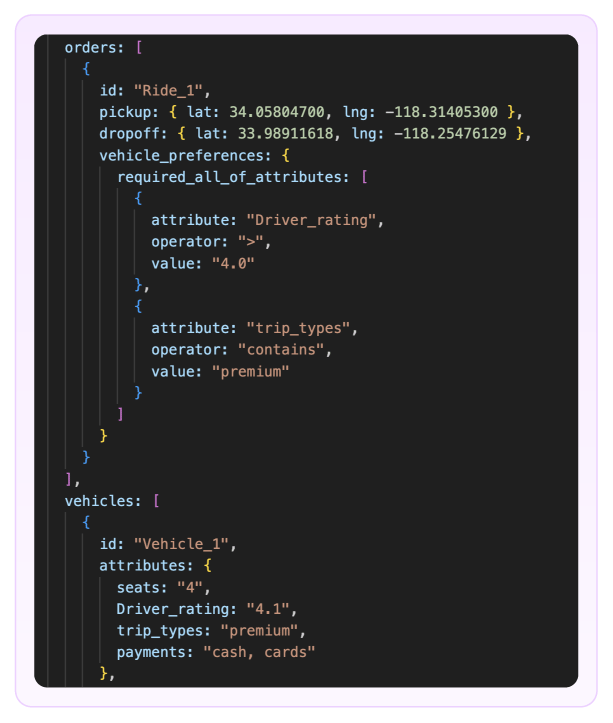
Recap: Why the Driver Assignment API Matters for Your Operations
The Driver Assignment API by NextBillion.ai simplifies one of the most complex parts of logistics. It enables dispatchers to match the right driver to the right task in real time.
With features like smart 1:1 matching, flexible cost models, dynamic reassignment, and seamless integration, it empowers operations teams to reduce manual effort, respond faster to on-ground changes, and scale efficiently. Whether you’re running deliveries, ride-hailing, or field services, this API helps you stay agile, accurate, and ahead of the curve.
If you’re looking to test and integrate this API into your existing operations, feel free to book a demo and see it in action. Our team will walk you through real-world scenarios and help you get started quickly.
Ready to get started?
Request a DemoTable of Contents

